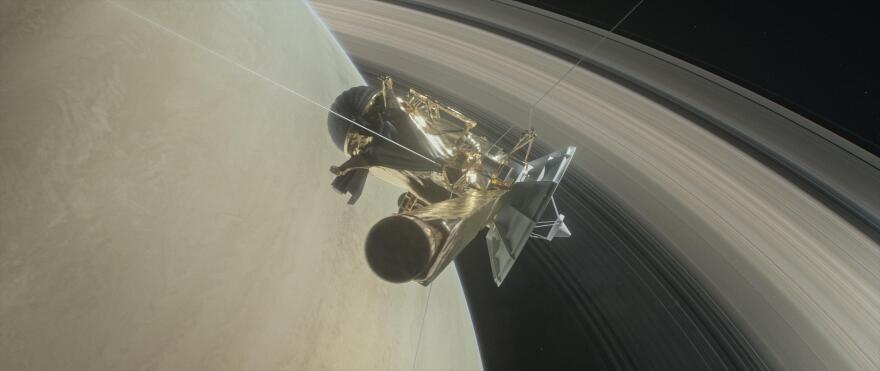Since it established its orbit in 2004, Cassini has continued to thrill scientists -- and the public -- with images and data of Saturn’s rings and atmosphere. One of the excited scientists is University of Colorado Boulder’s Larry Esposito.
“Cassini is a mission that allows us to see things never seen before -- to go places no spacecraft has gone

before,” says Esposito. “And what have we seen? Ghostly clouds, regular structure in the atmosphere of Saturn, what look like ripples and waves that have never been seen before. It tells us something about the dynamics, the behavior of winds in Saturn’s upper atmosphere.”
Esposito has been studying Saturn for nearly 40 years. He’s worked on camera systems on the Pioneer 11 and analyzed data from the Voyager mission. For the Cassini mission, Esposito is the principal investigator of the UltraViolet Imaging Spectrograph, a $12 million instrument built by CU Boulder.
UVIS creates images based on gases that the human eye can’t normally see by observing ultraviolet light. Scientists can then learn more about the components of those gases and by extension the atmosphere and climate of Saturn.
Esposito says he is most excited by the discovery of geysers on the surface of one of Saturn’s moons, Enceladus.
“Water is the key ingredient for life and we’re imaging there might be a place underneath the surface of this small moon -- Enceladus – underneath the surface of ice where liquid water could provide a habitat for possible life,” he says

Cassini’s mission will end in September, when it crashes into Saturn’s atmosphere.As it burns, it will transmit data during the final plunge. Though Cassini will be missed, Esposito says the mission has been a complete success.
“The mission exceeded all expectations – both in the number of discoveries and the ability that we’ve had to extend the mission and follow up on some of these new discoveries,” he says.
For more on the Cassini mission visit NASA’s website.
https://www.nasa.gov/mission_pages/cassini/media/index.html



